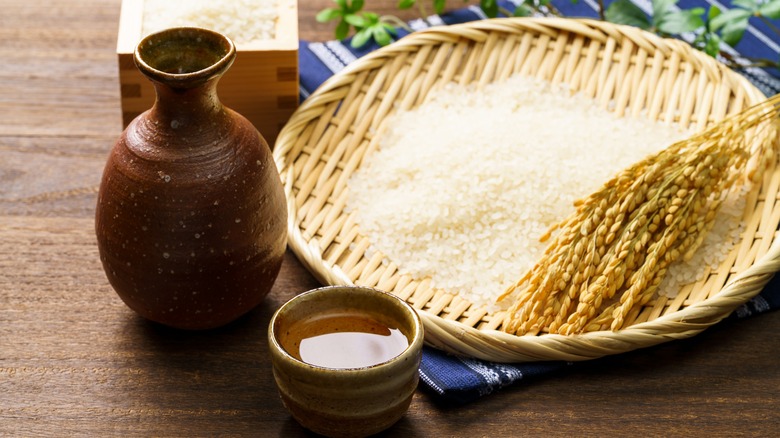What The Rice Polishing Ratio Really Means For Sake
While a sake bomb is an undeniably exhilarating drink at a sushi establishment, there's a whole lot more to explore with rice wine. Sake's brewed with only four components — water, yeast, mold, and, of course, rice — but such a combination produces incredible complexity. The drink's palate possibility is right up there with wine, with tasters searching for flavors in five major categories: bitter, dry, astringent, acidic, and sweet.
Given that sake ferments only rice grains, and no further flavoring additions, it may be surprising the drink can create so many flavor possibilities. Largely, this is due to a quality called the rice polishing ratio. The exterior of a rice grain creates unpalatable notes in sake after fermentation, so Japanese sake producers are regulated by how much they remove. The percentage refers to the amount of kernel still in existence. Take a rice polishing ratio of 60; this notates 40% of the rice kernel was trimmed off. How does such vernacular translate into flavor? Let's dive into the details.
Varying rice polishing ratios correspond to the sake's flavor
A wide medley of flavors exist in sake — from earthy to dry, fruity, and more. The amount of rice polished away correlates to the result palate, with the more removed, the lighter, fruitier, and the more refined the flavor. As a result, sakes with a polishing ratio of 50 are some of the most esteemed sakes. Since fermentation results in lower yields, such rice wines command a higher price.
However, that's not to say sakes with other polishing ratios are less tasty. For instance, honzojo, which has a ratio of 70, boasts interesting earthy tone notes not present in more polished expressions. And not all sakes fit into the regulated category; some have tastes completely distinct from the nomenclature. So, although a low polishing ratio signifies a "cleaner" expression, it's not the only demonstration of quality. As with other alcohols, it's all about tasting a medley of expressions to find one that suits your tastes best.

